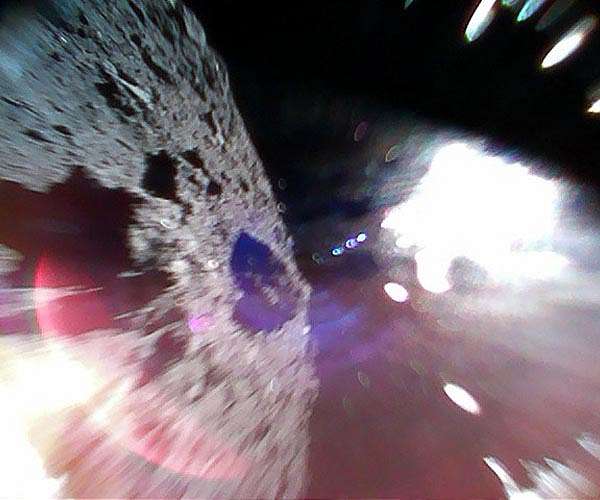
Hopping space dust may influence the way asteroids look and move (Image Credit: Space Daily)
Like corn kernels popping in a frying pan, tiny grains of dust may hop around on the surface of asteroids, according to a new study from physicists at CU Boulder.
That popcorn-like effect may even help to tidy up smaller asteroids, causing them to lose dust and look rough and craggy from space.
The researchers published their results July 11 in the journal Nature Astronomy. Their findings may help scientists better understand how asteroids change shape over time-and how these bodies migrate through space, sometimes bringing them dangerously close to Earth, said Hsiang-Wen (Sean) Hsu, co-lead author of the study.
“The more fine-grained material, or regolith, these asteroids lose, the faster they migrate,” said Hsu, a research associate at the Laboratory for Atmospheric and Space Physics (LASP) at CU Boulder.
The research began with a few curious photos.
In 2020, a NASA spacecraft named OSIRIS-REx traveled more than 1 billion miles to rendezvous with the asteroid (191055) Bennu, which is about as tall as the Empire State Building. But when the spacecraft arrived, scientists didn’t find what they were expecting: The asteroid’s surface looked like rough sandpaper, not smooth and dusty like researchers had predicted. There were even boulders the size of trucks scattered over its exterior.
Now, Hsu and his colleagues have drawn on computer simulations, or models, and laboratory experiments to explore that puzzle. He said that forces akin to static electricity may be kicking the smallest grains of dust, some no bigger than a single bacterium, off the asteroid and into space-leaving only larger rocks behind.
Bennu isn’t alone, said study co-author Mihaly Horanyi.
“We’re realizing these same physics are occurring on other airless bodies like the moon and even the rings of Saturn,” said Horanyi, a researcher at LASP and professor of physics at CU Boulder.
Related Links
CU Boulder
Asteroid and Comet Mission News, Science and Technology
|
|
Tweet |
|
|
|
We need your help. The SpaceDaily news network continues to grow but revenues have never been harder to maintain. With the rise of Ad Blockers, and Facebook – our traditional revenue sources via quality network advertising continues to decline. And unlike so many other news sites, we don’t have a paywall – with those annoying usernames and passwords. Our news coverage takes time and effort to publish 365 days a year. If you find our news sites informative and useful then please consider becoming a regular supporter or for now make a one off contribution. |
||
|
SpaceDaily Monthly Supporter $5+ Billed Monthly |
SpaceDaily Contributor $5 Billed Once credit card or paypal |
|
Asteroid Bennu Reveals its Surface is Like a Plastic Ball Pit
Greenbelt MD (SPX) Jul 11, 2022
After analyzing data gathered when NASA’s OSIRIS-REx spacecraft collected a sample from asteroid Bennu in October 2020, scientists have learned something astonishing: The spacecraft would have sunk into Bennu had it not fired its thrusters to back away immediately after it grabbed dust and rock from the asteroid’s surface.
It turns out that the particles making up Bennu’s exterior are so loosely packed and lightly bound to each other that if a person were to step onto Bennu they would feel very li … read more









